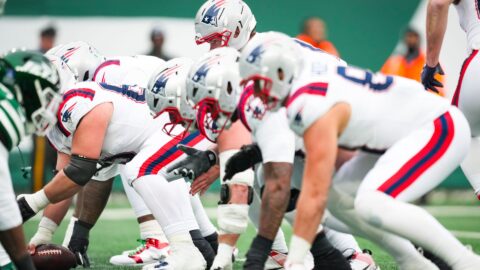You couldn’t have lived a more complete life than George Steinbrenner did.
You may have known him as the tyrant at the helm of the New York Yankees, but if that’s all you thought he was, you didn’t know him at all.
Politics, media, business, athletics, coaching, family, education, military, theatre, music — simply put, the man did everything. His journey through life, perhaps more than anyone not named Ronald Reagan, perfectly encapsulated America’s own modern story.
To be certain, George’s life began under auspicious circumstances. The son of a wealthy Great Lakes shipping magnate, who himself was a former track and field star, Steinbrenner was raised in Ohio under the tutelage of a true intellectual, entrepreneur and athlete.
George went on to attend Williams College in Williamstown, Mass., where he first showed his renaissance man colors as a two sport athlete, musician, and writer.
The next portion of Steinbrenner’s journey saw him enlist as an officer in the United States Air Force. After his term of service, he returned to the world of college athletics as an assistant to legendary Ohio State Buckeyes football coach Woody Hayes.
Hayes, himself an intellectual and military man, surely was a major influence on Steinbrenner, leading as despot, embracing controversy, innovating in his use of media and being one of the first coaches to take a chance on African-Americans.
Shortly after winning a national title with Ohio State, he returned home to the family business, Kinsman Marine Transit Company.
His mind for industry proved keen. Kinsman, principally a Great Lakes ore shipper, had been suffering due to already incipient decline of American metal exports, but with the still-intensifying settlement of the American West and improvements in agricultural technology, Steinbrenner was able to identify a different commodity to focus on: grain.
The business so prospered that the American Shipbuilding Company acquired it, with the Steinbrenners making so much money in the deal that George was able to purchase a majority stake in the larger firm and become chairman.
A man as intellectually broad as Steinbrenner, though, could not devote his life only to shipping. In 1960, he made his next venture into athletics, this time as the owner of the Cleveland Pipers of the American Basketball League.
George, like his mentor Hayes, would himself take a chance on an African-American, hiring John McClendon as the team’s head coach, the first black man to hold such a position in professional basketball. A man who can only be described as a winner, Steinbrenner’s Indians took home the ABL title in 1962.
The ABL folded soon after the Pipers’ title run, but that only gave George an opportunity to further broaden his horizons. It was in this period that the future Yankees owner would make his forays into theatre, via investments in Broadway productions, a trade that he would be a part of for decades to come. It was through Broadway, not baseball, that Steinbrenner began his relationship with New York City that so defined him.
Steinbrenner became active in Ohio politics, chairing Democratic Congressional Fundraising events and even being offered an opportunity to run for governor of the Buckeye State in 1970. He declined, largely because Steinbrenner never wanted to be defined by party affiliation.
Just a few years later, George’s contributions to the campaign of Republican Richard Nixon would spark controversy, resulting in his first suspension from running the baseball team which he had bought just a year earlier, the New York Yankees.
While Steinbrenner had wanted to buy his hometown Cleveland Indians, his attempts to do so proved unsuccessful, and in 1973, he was forced to instead purchase the struggling New York Yankees — price tag of 10 million dollars, an amount not equal to one-one-hundredth of its current value.
As portrayed in ESPN’s The Bronx is Burning, Steinbrenner brought flare, military-style order and inspiration to the franchise that had previously been suffering from one of its few eras of mediocrity. In 1977, George, Reggie Jackson and Billy Martin would bring home the Yankees’ first title in 15 years, a feat repeated by the team in 1978 as well.
For the next 35 years, the world would know Steinbrenner for his lavish purchasing of high-priced free agents, brushes with the league offices that resulted in suspensions and reinstatements, ill-tempered firings of managers and players, forays into pop culture (such as his 1990 Saturday Night Live appearance) and for producing a consistent championship contender. His longevity in all of these pursuits, though, can likely be attributed to his visionary uses of media.
Just as Woody Hayes given the Buckeyes a great advantage by being the first coach to analyze game film, Steinbrenner, too, gave his team a huge leg up through media. In 1988, Steinbrenner became the first owner to sell broadcast rights to a cable television network, a move unheard of at the time. The $40 million annual deal proved a huge success, giving George the treasury through which he would make his many high-priced acquisitions.
This forward-thinking gamble would only be trumped by Steinbrenner’s next cable innovation, his creation of the YES Network. The true engine of the Yankees' money machine, YES accounts for much of — if not all — the profits of holding company Yankees Global Enterprises LLC and helped fund the new Yankee Stadium.
As much as the man has meant to New York and baseball, his greatest contributions have perhaps been found in Tampa Bay. A devoted philanthropist, Steinbrenner built baseball fields, supported Boys and Girls Clubs, made improvements to Tampa infrastructure, created after-school programs, built a pediatric emergency room and funded children’s concerts for the Florida Symphony Orchestra.
He even created a charity, the Golden Shield Foundation, which provides monetary support and scholarships for the families of fallen police officers and firefighters.
Perhaps the most striking reflections of Steinbrenner’s heart came from his involvement in the lives of individuals whom he encountered.
According to Tampabay.com, he once met a deaf Yankees fan in Tampa and immediately paid for the child’s surgery to restore his hearing; he read that a family couldn’t pay for the funeral of their son, a high school football star who had been murdered, and George paid for it himself. During Hurricane Andrew in 1992, Steinbrenner himself funded and drove supply trucks around the ravaged areas.
Despite his temper and persona around New York, Steinbrenner was a man of a kind heart who was devoted to America’s youth and his own family.
Just as his father brought him into the family business, George mentored his sons Hank and Hal in his trade, and one must expect them to continue the organization’s success.
In his life, Steinbrenner accomplished nearly all that one could in America, evolving as a man, entrepreneur, creative mind and member of his community as the nation progressed from the era of iron ore to the era of Twitter.
Whatever his public persona may have been, he was defined by heart, honor and success at every moment of the journey. It is no stretch to call him one of America’s true treasures.
No wonder he was born on the Fourth of July.



